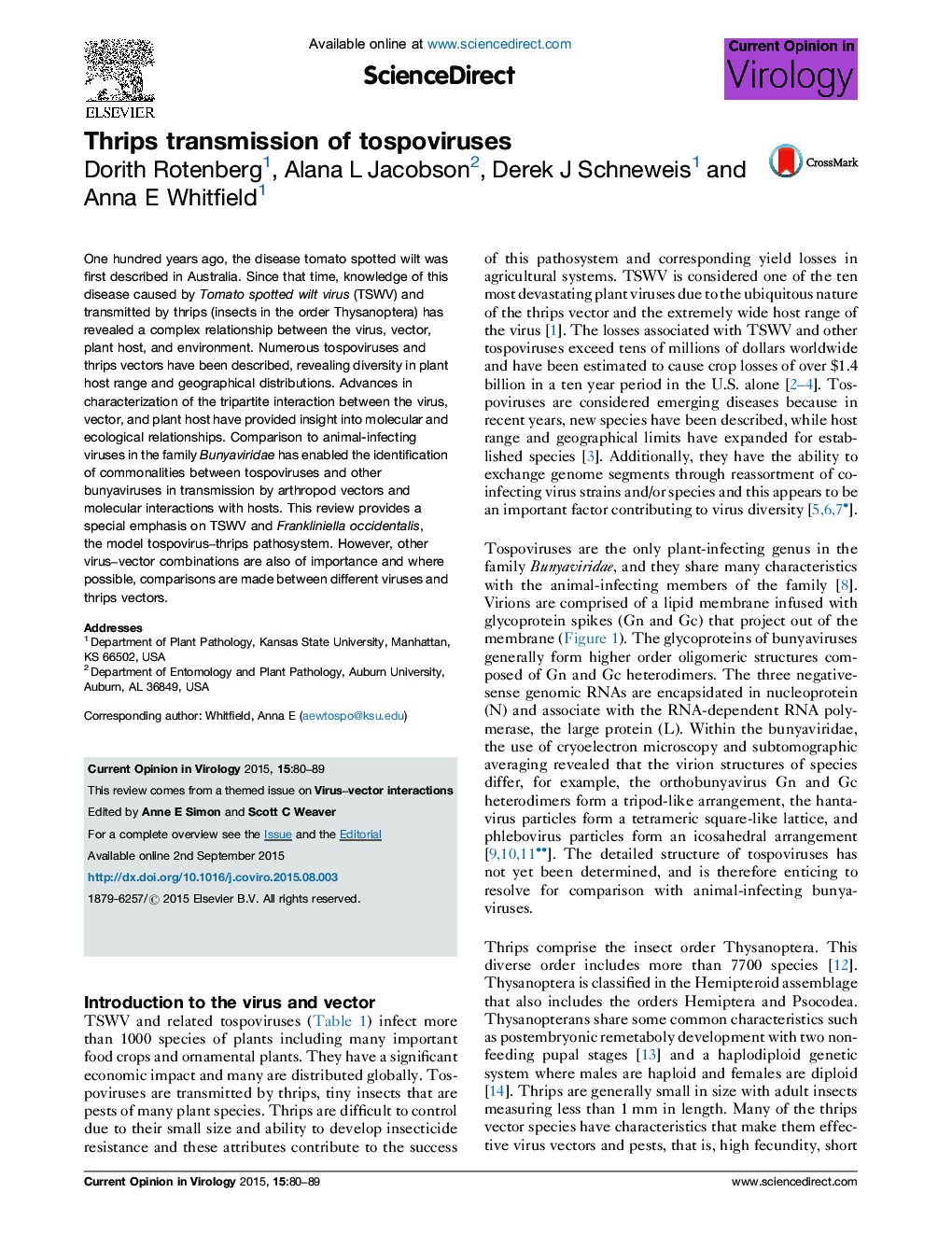| Article ID | Journal | Published Year | Pages | File Type |
|---|---|---|---|---|
| 2473202 | Current Opinion in Virology | 2015 | 10 Pages |
•Research is revealing greater genetic diversity of thrips vectors and tospoviruses.•Specific thrips–tospovirus population interactions underlie transmission efficiency.•Vector competency may be influenced by local adaptation of vector and virus.•Tospoviruses modulate thrips vector fitness and behavior.•Multiple large-scale sequence resources now exist for Frankliniella occidentalis.
One hundred years ago, the disease tomato spotted wilt was first described in Australia. Since that time, knowledge of this disease caused by Tomato spotted wilt virus (TSWV) and transmitted by thrips (insects in the order Thysanoptera) has revealed a complex relationship between the virus, vector, plant host, and environment. Numerous tospoviruses and thrips vectors have been described, revealing diversity in plant host range and geographical distributions. Advances in characterization of the tripartite interaction between the virus, vector, and plant host have provided insight into molecular and ecological relationships. Comparison to animal-infecting viruses in the family Bunyaviridae has enabled the identification of commonalities between tospoviruses and other bunyaviruses in transmission by arthropod vectors and molecular interactions with hosts. This review provides a special emphasis on TSWV and Frankliniella occidentalis, the model tospovirus–thrips pathosystem. However, other virus–vector combinations are also of importance and where possible, comparisons are made between different viruses and thrips vectors.
